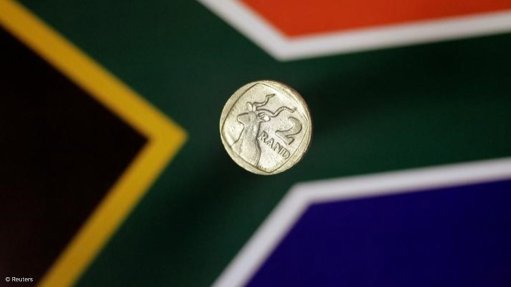The final chapter
In the last three columns, I wrote about how I worked for Eskom Eastern Cape as chief engineer for operations. The whole of Eskom and the Eastern Cape, as part of it, had been split into separate operating groups. Each division operated in separate areas, specifically South Cape, Free State, Northern Transvaal, et cetera. As I was in the Eastern Cape, our chief operating area was Port Elizabeth, with senior operating areas such as East London and Grahamstown. At the time, the Transkei was considered a separate country and had its own power supply authority.
It was a very interesting exercise to run a power system which was small in terms of power consumption but very large in terms of consumption area. By ‘interesting exercise’ I mean we had some towns and villages which were up to 150 km from each other and, if they suffered faults, these could be up to 3 km from even a medium-sized distribution substation. (For example, we had on occasion power failure as a result of sleet and hail. This is not usual for the Eastern Cape, but not unknown. The maintenance technician found that the condition of the road was so bad that he had to drive to repair the problem and then reverse from the point of the fault, some 5 km backwards.)
We were judged on the degree to which the power supply was not interrupted and the number of interruptions which occurred each year. I think I managed to create a record in one month by having one power failure every single day for more than two hours a day. There was nothing I could do about this; the weather in the Eastern Cape often created this sort of challenge.
One of the main challenges was to decide not that the Eastern Cape power system needed to be improved – we knew that improvement was necessary – but how to improve it. I didn’t want to fall into the trap of obtaining kudos by having a power system which was good, but only at localised places. I wanted the power system to be good as a whole. For this to occur, one had to motivate people to work, sometimes for long hours and for little reward.
The best approach was one which I would recommend to anybody these days: for any area which is spread over some distance and has many widespread substations, visit as many of them as possible. A visit to a substation always improves the morale of the people working there and will cheer them up. While cheering them up might not make them work very much harder, it will certainly stop them from giving in to a lack of morale and indifference.
All this took place in my early forties, and this is now a long time ago, but the work I did then had some unique challenges. I would suggest to any businessperson who is serious about getting on in a large company to start working in the parts of the company that require the most work spread over the largest area. By doing so, you will gain great experience, and this will last a lifetime. You will also have the opportunity to make a noticeable impact on your superiors. But what must be remembered is that I did not stay very long with Eskom. South Africa was changing. The country was being run by a different group of people. There was nothing wrong with this, but this is what was happening.
Eskom wanted to be one of the first to change and, to achieve this, it wished to have as many previously disadvantaged people as possible in the new administration. To get such people into the existing system, others had to move on. Others might not have wanted to move on, but they were offered incentives.
In due time, we were all asked to attend a meeting and given a blunt opportunity: we could have quite a bit of money and leave our jobs or stick around and have others pass over us. It would have taken a saint to stay behind.
Article Enquiry
Email Article
Save Article
Feedback
To advertise email advertising@creamermedia.co.za or click here
Comments
Press Office
Announcements
What's On
Subscribe to improve your user experience...
Option 1 (equivalent of R125 a month):
Receive a weekly copy of Creamer Media's Engineering News & Mining Weekly magazine
(print copy for those in South Africa and e-magazine for those outside of South Africa)
Receive daily email newsletters
Access to full search results
Access archive of magazine back copies
Access to Projects in Progress
Access to ONE Research Report of your choice in PDF format
Option 2 (equivalent of R375 a month):
All benefits from Option 1
PLUS
Access to Creamer Media's Research Channel Africa for ALL Research Reports, in PDF format, on various industrial and mining sectors
including Electricity; Water; Energy Transition; Hydrogen; Roads, Rail and Ports; Coal; Gold; Platinum; Battery Metals; etc.
Already a subscriber?
Forgotten your password?
Receive weekly copy of Creamer Media's Engineering News & Mining Weekly magazine (print copy for those in South Africa and e-magazine for those outside of South Africa)
➕
Recieve daily email newsletters
➕
Access to full search results
➕
Access archive of magazine back copies
➕
Access to Projects in Progress
➕
Access to ONE Research Report of your choice in PDF format
RESEARCH CHANNEL AFRICA
R4500 (equivalent of R375 a month)
SUBSCRIBEAll benefits from Option 1
➕
Access to Creamer Media's Research Channel Africa for ALL Research Reports on various industrial and mining sectors, in PDF format, including on:
Electricity
➕
Water
➕
Energy Transition
➕
Hydrogen
➕
Roads, Rail and Ports
➕
Coal
➕
Gold
➕
Platinum
➕
Battery Metals
➕
etc.
Receive all benefits from Option 1 or Option 2 delivered to numerous people at your company
➕
Multiple User names and Passwords for simultaneous log-ins
➕
Intranet integration access to all in your organisation
















